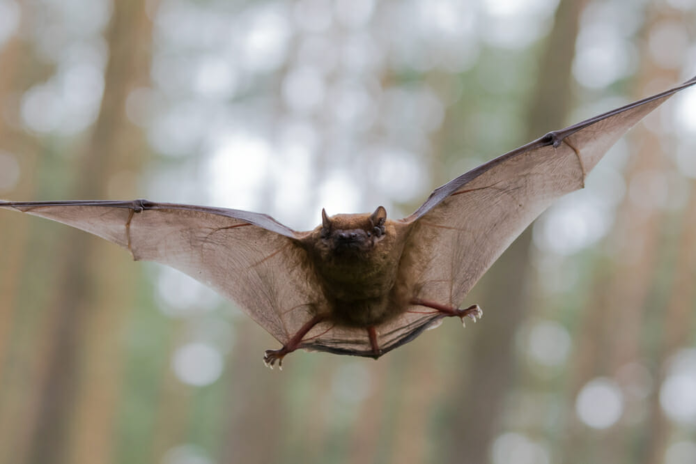We’ve all heard about dangerous diseases that have been caused by animals, from rabies to COVID-19. Diseases that are caused by germs originating in animals are called zoonotic diseases or zoonosis. These zoonotic diseases make up the majority of known diseases. The CDC (Centers for Disease Control and Prevention) even states that six out of every ten infectious diseases are spread from animals, and that three out of every four emerging diseases are zoonotic.
Rabies
One of the most well-known zoonotic diseases is rabies. This disease is transferred from an assortment of wild animals, ranging from bats and skunks to foxes and wolves. Rabies is usually transferred through the scratch or bite of one of these animals. The disease targets a person’s nervous system and can even result in death.
Coli
coli is another well-known zoonotic disease. Though it’s primarily transferred by cows – through the consumption of meat or milk – birds are also known for transferring it through their droppings. This disease causes stomach cramps and diarrhea. In rare cases, it even causes permanent damage and leads to seizures, strokes, and comas.
Salmonellosis
Another common disease that causes food poisoning is salmonellosis, more commonly known by the name of the bacteria that causes it, salmonella. The CDC estimates about 1.35 million Americans are infected with the disease and 420 of them die of it each year. This is one of the numerous diseases birds carry. Birds are the primary cause of salmonella and it is transferred to people by eating undercooked infected poultry and eggs. The symptoms resemble those of E. coli, as it causes stomach cramps and diarrhea, though it’s also known to cause fevers as well.
Ebola
You’re likely familiar with Ebola, the disease that made headlines back in 2014. What many don’t know is that the disease originated from bats, thus making it a zoonotic disease. What made this disease so alarming was the high fatality rate, with the World Health Organization (WHO) estimating the average fatality rate was fifty percent. The symptoms of this disease include hemorrhage, fever, headache, sore throat, vomiting, diarrhea, and rashes.
SARS
Back in 2003, there was an outbreak of a dangerous coronavirus in southern China. This disease was SARS (Severe Acute Respiratory Syndrome). Nearly 8,000 people were infected globally, of which about 700 lost their lives. Though the WHO isn’t certain about what animal caused the outbreak, the organization suspects it to be another one of many bat diseases. This disease was characterized by high fever, headaches, body aches, diarrhea, dry coughs, and pneumonia.
MERS
There was another outbreak of a coronavirus in 2012 linked to animals. MERS (Middle East Respiratory Syndrome) has infected around 2,500 people and has a mortality rate of about thirty-five percent, with almost 850 people losing their lives to the disease. The WHO states that the virus likely originated in bats but was then transferred to camels before infecting humans. Due to its close relationship with the SARS virus of 2003, MERS shares some of its characteristics. These include fever, shortness of breath, pneumonia, and diarrhea.
COVID-19
In late 2019 there was another outbreak of a coronavirus disease in China. This disease, dubbed SARS-CoV-2 or more commonly known as COVID-19, is said to originate in bats according to the WHO, though likely transferred to another animal before finally infecting humans. This disease has caused the greatest global pandemic since the Spanish Flu in 1918. Similar to the SARS diseases of 2003, COVID-19 has symptoms including a fever, cough, diarrhea, headaches, body aches, vomiting, and a sore throat.
Saint Louis Encephalitis
Saint Louis Encephalitis (SLE) is a disease spread by mosquitoes. Many of these mosquitos get the disease after biting birds who are already infected with it, before spreading it to humans. This disease had a massive outbreak in 1975, infecting 2,000 people in the US. Yet it has been controlled since then, and there are under 20 cases in recent years. Typical symptoms of this disease are headaches, nausea, and fever.
West Nile Virus
The CDC reports that one of the zoonotic diseases that are a concern to the US is the West Nile virus. Similar to SLE, this disease is spread by mosquitoes after feeding on infected birds. About four out of five infected individuals will show no signs of having the disease and will have no symptoms. Others, on the other hand, can be identified by the fevers, headaches, body aches, nausea, vomiting, and rashes that are caused by the disease.
Zika Virus
The Zika virus made headlines in 2015 after Brazil reported an outbreak. This zoonotic disease is spread by mosquitoes and has been found in humans since the 1950s. Unfortunately, there is still no treatment for this disease. Most people infected with the Zika virus don’t develop any symptoms, but others may have mild symptoms in the form of a fever, headache, and rash. The deadliest aspect of the Zika virus is if a person is infected while pregnant, which could lead to abnormalities in the child and lead to pregnancy complications like still-births.
Lyme Disease
The CDC says that Lyme disease is the most common vector-borne disease in the US, and they estimate that 300,000 people get infected by it in the US alone. It’s spread to be people by ticks. Symptoms include fevers, chills, headaches, and rashes.
Cat Scratch Disease
Though most zoonotic diseases are caused by wild animals, some may even occur through our pets. One such example is Cat Scratch Disease (CSD). This disease can develop within cats and is spread to other cats through ticks, but cats show no symptoms. In fact, the CDC estimates forty-percent of all cats have it at some point during their lives. The disease can be spread to humans through a bite or scratch. Symptoms usually involve swelling and pus, as well as headaches and a loss of appetite.
The world may seem like a dangerous place because of all of these diseases, but they’re rarer than the numbers make them out to be. Most people who are infected don’t even realize, and the disease passes quickly. If you’re worried, the CDC says the best thing to do is to avoid getting bitten or scratched by animals, avoid mosquito bites, and to always wash your hands after handling an animal. Things most of us do anyway.
Sources
https://www.cdc.gov/lyme/signs_symptoms/index.html
https://www.who.int/news-room/fact-sheets/detail/zika-virus
https://www.cdc.gov/sle/technical/symptoms.html
https://www.who.int/news-room/fact-sheets/detail/west-nile-virus
https://www.cdc.gov/onehealth/basics/zoonotic-diseases.html
https://www.cdc.gov/coronavirus/2019-ncov/symptoms-testing/symptoms.html
https://www.who.int/health-topics/middle-east-respiratory-syndrome-coronavirus-mers#tab=tab_1
https://www.who.int/docs/default-source/coronaviruse/situation-reports/20200423-sitrep-94-covid-19.pdf?sfvrsn=b8304bf0_4
https://www.who.int/ith/diseases/sars/en/
https://www.who.int/health-topics/ebola/#tab=tab_2
https://www.cdc.gov/media/releases/2019/s0506-zoonotic-diseases-shared.html
https://www.medicalnewstoday.com/releases/61646#1
https://iacuc.wsu.edu/zoonoses-associated-with-birds/
https://www.cdc.gov/onehealth/basics/zoonotic-diseases.html
https://www.cdc.gov/healthypets/diseases/cat-scratch.html


























